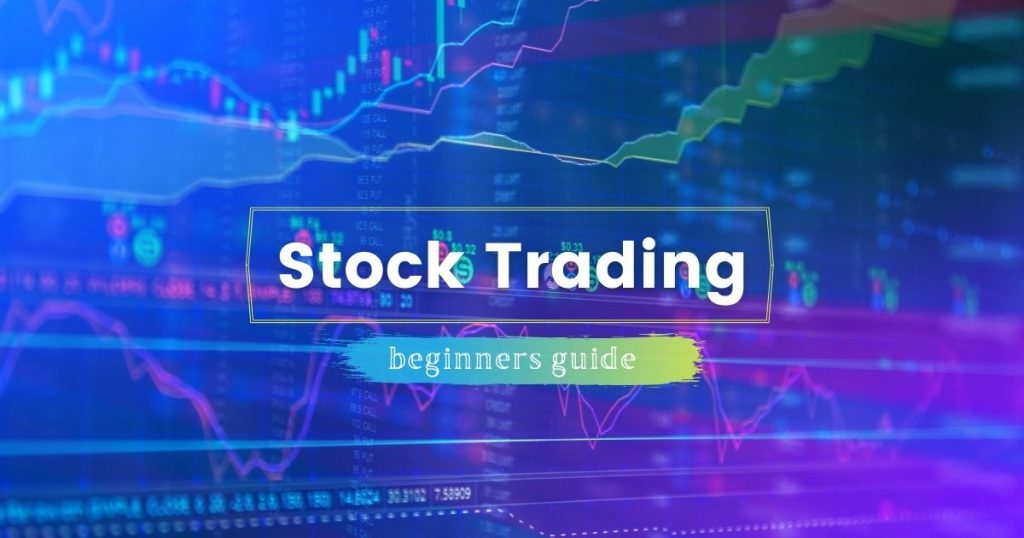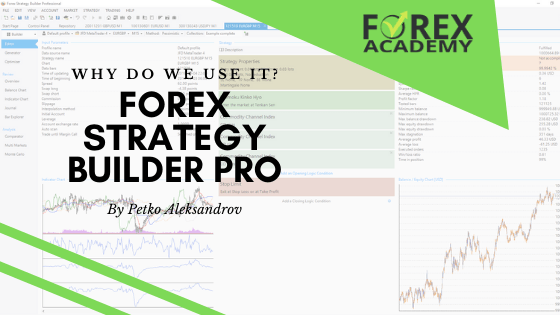Making money in stocks used to be hard, you needed a lot of money to even start and hire a brokerage but now with online, modern technology – you can start making money now. In this article, you will learn all about online stock trading and the ways you can make money from it.
Table of Contents:
This we guarantee you, over time, as you develop your skills, you grow your knowledge in stock trading and gain the discipline you need – you will achieve the success and the dream lifestyle that you’ve always wanted. And it all starts with knowing what online stock trading is.
What is Online Stock Trading
Stock trading means you are buying a piece of a company, essentially an asset, and hope to make a profit from that by selling it on the stock market which has its daily price fluctuations.
And online stock trading is simply the process where you can virtually trade anywhere in the world, as long as you have access to the Internet, you can be in the Bahamas or your own private beach.
Now, do not confuse online stock trading with stock investing. Investing in stocks is more passive while trading stocks is more active. Both types need skills and disciple but for differences between them, there are 4:
- Timeline: an investor would normally hold their stocks for years while a trader will only hold for a day or a week
- Market Conditions: traders will often look for spikes in the market while investors will often only make their money by dividends and compounding interests over the years
- Risk: investors will only make their money per quarter or per year while a trader can make money within 7 days or less
- Mindsets: an investor will often have a more mind learning the fundamentals of the company, leadership, etc – while a trader is more technical in his/her approach, analyzing geopolitical market trends, etc
Now, when it comes to the mindset of a stock trader, there are two:
Active Trader
The active trader is someone who makes a profit at the end of the month. They would normally place 15 to 20+ traders per month, using mainly timing as their strategy meaning fluctuations in the market such as corporate leadership, scandals, geopolitical policies, and more to their advantage.
Day Trader
A day trader is someone who makes a profit within the day. Imagine, buying a stock of Walmart, the price spikes up by 10% – you then sell your stocks and make a 10% profit on your investment. A day trader doesn’t care too much about corporate structure, he/she only cares about the stock value.
History of Stock Trading
As far as official records are concerned; the birthplace of “stock trading” was in France, roughly 1100s – 1150s A.D. – a prominent figure was the Venetian Bank in 1156, who acted more like a quasi coffer for the elite rather than the modern banks that we know today.
Unofficially, it was probably much earlier than that but rather than notes, bonds or securities. People used animals as debt, to barter or loan land, property, or goods.
Now, let’s be clear on what a stock market is. It is essentially a marketplace where people of all social standing can have access to goods such as gold, silver, land, and animals. Today, we call them securities, credit, futures, companies and yes, gold is still on the market.
And the idea behind a stock market or marketplace is you purchase an asset at a low price, it can be a piece of a company like Amazon which is $3,164.68 per piece, and you sell your piece when the value of Amazon goes up.
The most prominent and influential stock market in the world is the New York Stock Exchange, with a daily trading volume of 2 to 6 billion shares or ‘pieces‘ which means the money being made or traded is roughly $227 billion per day.

Here is a quick history of the United States stock market:
- 1674: on Wall Street, the first script (it’s a very early version of credit) was exchanged
- 1929: the Great Depression destroyed the U.S. economy
- 1933: Banking and Securities Acts were formalized
- 1940: the Investment Company Act set the rules and standards for investment and mutual funds companies
- 2000-2001: dot.com bubble and/or the tech crash
- 2007-2008: U.S. financial crisis
- 2020: the world pandemic, drove the U.S. stock market down by as much as 20%
The average beginner stock trader makes roughly $3,000 to $4,500 per month – that’s about $150 per day in profits. The intermediate stock trader will normally make 2x to 4x in profits while the expert stock trader will make well over 5 times that. And as per the professionals, well, over 10 to 100 times the profit.
What is Penny Stock Trading
A penny stock refers to a company whose stock share value is low-priced usually around $5 or less. Almost all traded companies start out as having penny value like Amazon, whose penny stock share used to be $14. Now, they are well over $3,000 per share.
Here’s something you must consider; when you invest in a penny stock, you are not investing in it for a long time. Generally, you’re looking at daily turnovers or profits. It’s a fantastic way to grow your investment portfolio meaning your funds for further investing.
And best of all, you’re not competing with the big banks, massive hedge funds, or even billionaire traders like George Soros or Paul Tudor Jones. Most of these professionals ignore penny stock trading because they can only make millions not billions of dollars.

So, I’m sorry to say, you can potentially only make millions of dollars, not billions of dollars; is a million dollars okay for you? The reason why they and you should generally avoid investing long term in penny stock trading is that many of these companies may eventually fail; meaning if they fail, your investment also fails. They disappear, your money also disappears.
It is an extremely amateur move, to invest all of your hard-earned money in a small company – only because you feel it’s going to go in value. It is best to put some of your money in X company, Y company, and so on – diversify your investment as one could grow faster than the other.
Take note that in the trading world of penny stocks, it’s quite common to see a stock meaning, a company’s value to spike upwards of 20% to 100% in a week or sometimes in a day. Imagine, your money triples in worth in a single day! Of course, it can also spike down 20% to 100%.
Stock Trading Strategies
Day Trading
A day trader is someone who makes their money during the time the market is open and before the close. Here’s an idea, imagine, you are a trader in a market that sells gold. You have sellers (companies) where you can buy cheap gold (shares). And you sell your gold to as many buyers at 2x the original price – that’s what day trading is.
The day trader is someone who very much balances their risk to reward ratio. Most day traders only invest 1% to 2% of their money, per trade as most day traders are in for the long game.
Example of 0.5% risk to reward ratio:
- You have a $40,000 investment account but you only want to risk 0.5% per trade
- You will only risk losing $200 max (0.5% x 40,000)
Common Day Trading Strategies
- They would trade fractional shares meaning a quarter, half or third the original value – for example, 1/4 of $100 = $25 share price
- Rarely or never invests in penny stocks
- Has strict limit order or market order rules
- Trades as soon as the market opens – NOT recommended for beginners
- Has a set profit percentage per trade – for example, they’ll exit a trade once a share is valued at 10% its original value
Position Trading
A position trader is someone who invests in a company for months or years. This is essentially where wealth can truly be achieved through years of work and experience – you will have your reward.
Common Position Trading Strategies
- Uses both technical and fundamental analysis to evaluate possible trends and risk in the market, does not care about short-term fluctuations in the market
- Often uses a lot of levels of resistance and support. These are what you may call as from losing money or losing making money
- Often they will trade on a range. Think mountain peaks. They analysis the best time to enter, hold and exit
- Many other indicators such as Fibonacci retracements – they do this to balance not just the range but also their risk to reward ratio
Swing Trading
A swing trader who banks on the swing or wave of a trend. For example, you have stock on Amazon, and you know with your research that with all the new innovations and expansion Amazon is doing that it will go up.
As the trend line starts to go up, you ride that wave until you exit at a comfortable point. Now, this is important to know that a trend can take days, if not months to start and stabilize. Fundamental research is crucial to analyzing the ideal early entry point.
Common Swing Trading Strategies
There are essentially 2 types, and many more but to not intimidate you and keep it simple, we’ll pick two of the best trading strategies.
#1- Breakpoint: you’re waiting for the market to break your Resistance or Support lines, then you enter.
#2- Ride the Wave: as soon as the market stabilizes at the bottom and it starts to go up, you enter, meaning if Amazon stock stops or stabilizes at $0.50 and now is slowly going up, you enter and exit at about $1,00.
Scalping
A scalp trader is someone who relays banking on spikes or volumes of stock, meaning if Facebook, for example, has a new scandal – you can imagine the impact it will have on the company.
This is where a scalper enters. He/she makes their money in minutes, meaning you could literally make a few $100 if not $1,000 in 1 minute.
Common Scalping Strategies / The Scalper’s Mindset
Now scalping can be tricky as it’s a very emotional game. Most scalp traders trade most based on instinct and some use indicators or oscillators, Bollinger bands, stochastics, and more – again, this is to help them see.
The idea is either you as a scalp trader, go in with no indicators, just you and the market or you use indicators to help you and add some restrictions or balance to your risky behavior.
Note: please always remember that all of these strategies require very diligent research even with scalping. Regardless of whatever strategy you choose to use – never rush into a trade because of a feeling.
Best Online Stock Trading Platforms
Now, telling you which one is the best stock trading platform for you can be tricky as we are all different but to help guide you, here are 6 stock trading platforms or brokers that we recommend:
- TD Ameritrade – good for beginner stock traders
- E*Trade – good web platform experience
- Merril Edge – good rewards program
- Charles Schwab – ideal for IRA accounts
- Fidelity – good research experience
- TradeStation – good platform technology
What to Look for in a Stock Trading Platform / Broker:
- Research the reviews on the withdrawal experience of most traders or investors – was it easy, needlessly complicated, hard, or was transaction fee too high and so on.
- Based on reviews, has the stock trading platform been reliable over the years? Any scandals? How’s the corporate culture? Customer experience? Are they generally positive or negative?
- Make sure the stock trading platform is user-friendly. Are they customizable? Can you change colors? Can you change the sizes of windows?
- Do they offer automatic trading or is it just trading?
- How’s the customer service? Are they responsive? How fast are they? Are they professional? What do the reviewers say? Do they have any awards? Why? How?
- Is your data ?! Do they share your data with advertisers or just theirs? Have they had any security or data breaches? If yes, how did they respond?
- Does the brokerage or stock trading platform offer educational resources, a paper trading account (demo accounts)? Do they have a comprehensive glossary?
Stock Trading Tips & Risks to Avoid
When it comes to online stock trading tips, learn the basic terms such as ‘stock market crash’, ‘stock market correction.’ Always diversify and understand the daily fluctuations of the stock market are all great.
But oftentimes, they will not work for you because please understand this – online stock trading is very much tied to your appetite or personality as a trader.
You can be a more aggressive trader who loves the thrill of risky 50% of their money or you’re more passive, conservative and you only want to risk 1% – so the solution this whole concept is to give you two main tips or processes that all traders do but first, common risks for you to avoid.
Risks to Avoid:
- Avoid stocks with no volume or very low – you want to trade in stocks with some moderate amount of liquidity, volatility or movement
- Again, avoid stocks with no volume – as even if you have meant your share rose 30% after a year – with little volume, who’s gonna them? And let’s not even talk about manipulative market makers or misconduct. You don’t have to be afraid of them, just.
- In volatile stocks, you’re an aggressive trader. Most traders are conservative, risking only 1% to 2% of their money per trade.
- Avoid Leverage or borrowing. It can sound appealing to have your money tripled by leverage but please note, that it can be very risky and not advised.
- Going all-in on 1, single trade. Diversify your trades.
- Not having a strict stop loss rule. Again, this is to balance your risk to reward ratio.
- NEVER, ever trade because of a or you overconfident because of such and such. Be realistic about this.
Best Two Stock Trading Tips
In stock trading, there are essentially two main processes that all traders go through, quantitative and qualitative research. Most traders go 80% on quantitative and 20% on qualitative. Each process contains tens to hundreds of little tricks and tips, fitted to a trader’s personality.
Quantitative – 80%
The process of quantitative research is essentially mathematical data meaning you collect data on price points, lowest price, highest, common price action trends, a historical mathematical figure such impacts of scandals on the company, and more.
All of this is done to enable traders to determine the trading model that they will use or automate a new trading model. Most traders prefer this method as it’s more logical, it “makes sense” and “numbers don’t lie.”
The best about quantitative research is you can create an automated trading system with it – emotions are the killer of any aspiring stock trader. Imagine, a program, following all your orders with no emotions and you just observe and pivot whenever you want.
Qualitative – 20%
When you think “qualitative”, you think “quality” which means the overall quality, status, or health of the company you are researching. Everything from the motto of the company, its mission and vision, and even the leadership of the company – some traders also call qualitative as fundamentals.
This is very important to understand because if you’re only just looking at the financial statement, the fundamentals, the numbers, the company plans for next year but you’re not looking at Who the CEO is, how his/her reputation and vision for the company and how it impacts the culture of the company, checking if there are any issues within that, potential problems – here’s an example for you:
Looking at Facebook, a lot of people are a little bit wary about Facebook because of some of the things they have done in the past, remember the Cambridge Analytica scandal, and how that scandal impacted Facebook’s shares?
All of this is what Qualitative Research means, it’s all about finding Quality if this product i.e. the company as a whole truly does have a value worth investing or in simpler terms, you are dating the company to see if they are a fit for your portfolio.
Your Step-by-Step Beginner’s Guide to Online Stock Trading
Step 1: Mastering The Basics
Terms such as ‘bearish market’ and ‘bullish market’ are some of the many basic terms you must master. Aside from the many articles we have available here on EAForexAcademy.com – we recommend you watch YouTube videos.
YouTube has so many different free videos from real traders who willingly share their knowledge and experience with you; from the basics of stocks, the stock market, range trading, daily fluctuations, market manipulations, and more.
There are even books on stock trading, here are 3 of our recommended books on stock trading:
- The Little Book of Common Sense Investing by Jack Bogle
- The Intelligent Investor by Benjamin Graham
- Trading for Dummies
The best way is to enroll in one of our Stock Trading courses which teaches you everything you will need to know to start trading and making money in trading stocks.
Step 2: Pick a Broker or Platform You’re Comfortable With
Use the steps we outline on what to look for in a stock trading platform or broker. The more you know about them, the more you will feel comfortable. Just remember, the more the stock trading platform can accommodate to your personality, the better chances of you making money.
Step 3: Open an Account
Once you’ve done your research, simply open an account with them. Please that some stock trading platforms require a deposit before you can register with them so note that in your research if you are comfortable with a platform that does that to you.
Step 4: Paper Trading Account
A paper trading account is a demo account meaning you have access to a virtual trading account with virtual money – this is where you practice everything and most of all, you get to know your personality.
Be as experimental as you can, make mistakes, make wins, use all the different strategies that you can. Remember “practice makes perfect.”
Step 5: Go Live
Once you’ve gained experience, familiarize yourself with the daily stock fluctuations – buy your first share. And remember this, your whole emotional state will shift, it’s not a bad thing – just means, you’re in now. You are a stock trader.
Conclusion
Stock trading has been the key method a lot of ordinary, average people like yourself used to get rich and live the lifestyle that they’ve always dreamt about.
Here at EA Forex Academy, this is our mission; to help you achieve your dreams. We write these articles to share with you our thoughts and experiences that you may see that it is possible that you make money online and escape that office life.
It is extremely crucial that you know the basics and terms of stock trading. The last thing you ever want to experience is to lose money. We don’t want you to lose money, we want you to make money. Research, study, and take notes on all the basics and terminologies.
For you, the next step is to watch our free videos on lessons about online stock trading. Just register here in our Academy and when you’re ready; you can join the thousands of successful students enrolled in our courses.
Just like you, they started out as beginners, not knowing the fluctuations of the market and the strategies to use in those times. Now, with our courses, we teach and guide you on everything you need to know about the stock market, trading and actually making money.



